Key Points:
- The Carboniferous is named for the abundant coal (carbon) deposits found in the upper part of the period. Geologists have divided it into two subperiods called the Mississippian and Pennsylvanian.
- Arthropleura is an arthropod genus believed to be the ancestor of modern-day millipedes. However, it was significantly bigger, growing to lengths of up to eight feet and a width of about 20 inches.
- Tullimonstrum, also called the Tully Monster, is from the clade Bilateria. It possessed a soft body and lived in the shallow tropical waters of the Carboniferous.
The Carboniferous Period succeeded the Devonian Period and preceded the Permian Period. The start of this period was around 358.9 million years ago, and it ended about 298.9 million years ago. With a span of about 60 million years, it was one of the most prolonged periods of the Paleozoic Era and the second most prolonged period in the Phanerozoic Eon. You can therefore expect to have a long list of animals that lived during the Carboniferous Period.
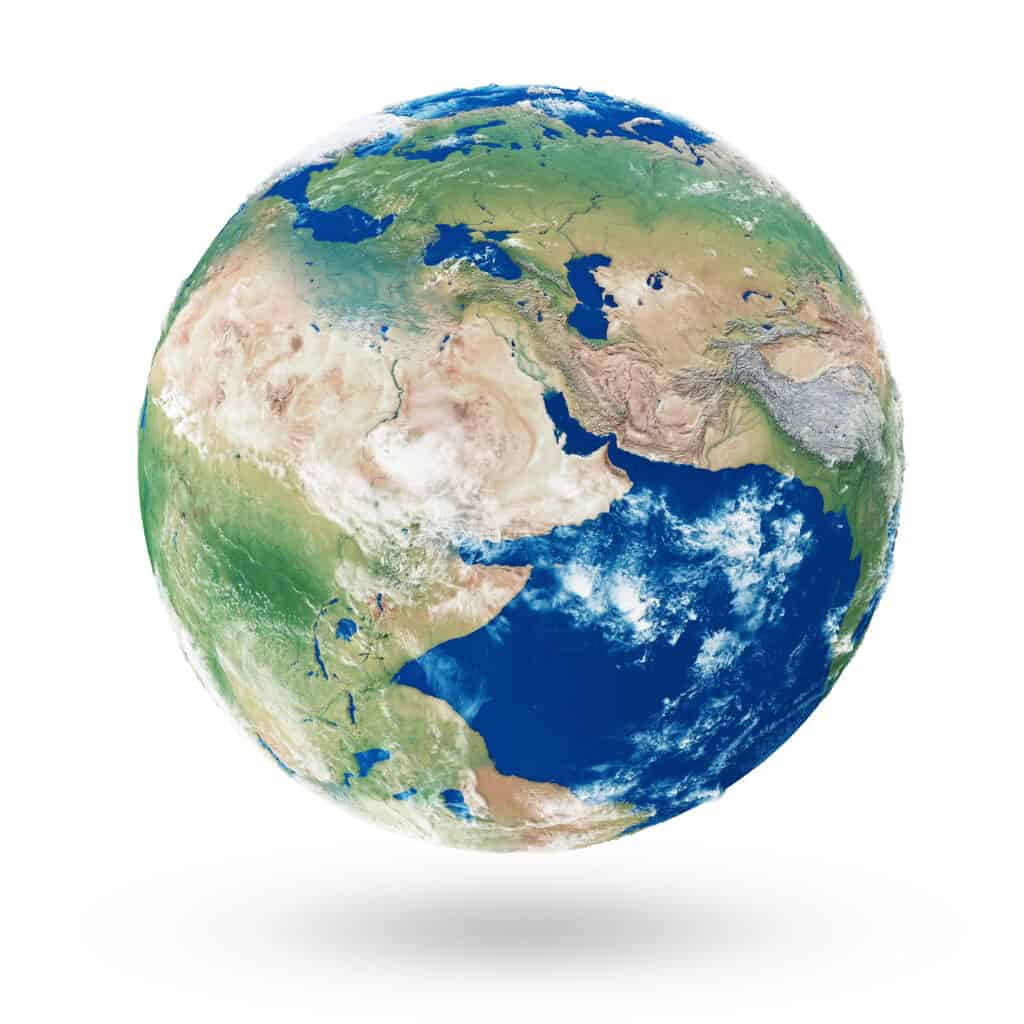
The Earth 200 million years ago: Pangea, the massive supercontinent that paved the way for the evolution of new species.
©Rashevskyi Viacheslav/Shutterstock.com
The Carboniferous is named due to the abundant coal (carbon) deposits found in the upper part of the period. Geologists further divide the Carboniferous into two significant subperiods, namely:
- The Mississippian (358.9 to 323.2 million years ago)
- The Pennsylvanian (323.2 to 298.9 million years ago)
The end of the Carboniferous Period coincided with the emergence of Pangea, a massive supercontinent formed by an aggregation of all of the planet’s landforms. The geological and climatic effects of this aggregation paved the way for the evolution of new animal and plant species, including some of the most impressive vertebrates and invertebrates. Here is a list of some incredible Carboniferous Period animals you may find interesting.
Arthropleura
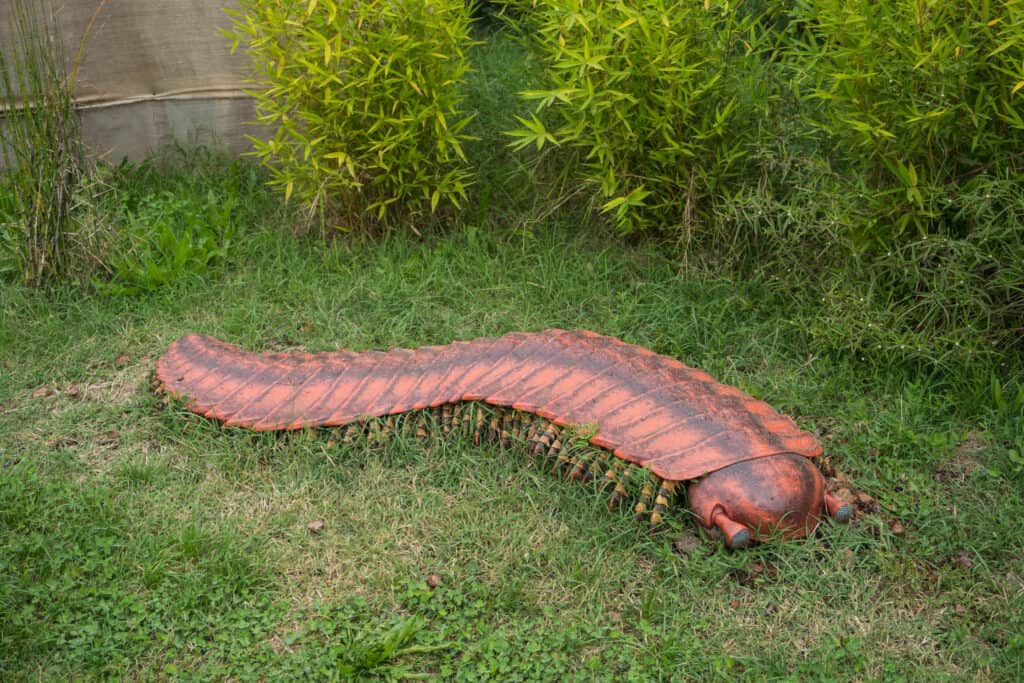
While much larger, researchers believe Arthopleura to be an ancestor of the modern-day
millipede
.
©FABRIZIO CONTE/Shutterstock.com
Arthropleura is an arthropod genus believed to be the ancestor of modern-day millipedes. However, it was significantly bigger, growing to lengths of up to eight feet and a width of about 20 inches. Scientists consider this animal the largest invertebrate of all time. The Carboniferous Period was characterized by a high oxygen content during the time Arthropleura was alive. Carbon was stored in inert forms like woody plants, and oxygen made up more than 26% to 30% of the planet’s atmosphere.
Scientists have hypothesized that the high oxygen content is the reason for the massive size of the Arthropleura and other invertebrates of the Carboniferous. However, the conditions didn’t remain favorable like this. Climate change during the Permian Period, when the coal swamps eventually disappeared, is likely to have contributed to the extinction of Arthropleura and many other large invertebrates of the period.
Meganeura

Like dragonflies,
Meganeurawas predatory.
©andrey oleynik/Shutterstock.com
Meganeura is the name of a group of giant extinct insects that lived during the Carboniferous Period. They were predatory, like modern dragonflies and damselflies (to whom they are related), and their primary prey were other insects.
The family Meganeuridae includes other giant dragonfly-like insects that lived anywhere from the Late Carboniferous to the Middle Permian. Meganeura is one of the largest known flying insect species, with a wing span of 25.6 inches (65 cm) to more than 28 inches (70 cm)
Carboniferous Arachnids (Arthrolycosidae)
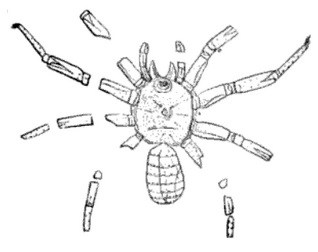
An illustration of the fossil arachnid
Arthrolycosa antiqua, from
The American Journal of Science, circa 1889.
© – License
During the Carboniferous Period, a particular order of arachnids flourished. They weren’t spiders, but they were still arachnids. Giant arachnids from the Carboniferous Period might reach dimensions of more than a meter in length and width. Spider-like in appearance, Carboniferous arachnids featured enormous pincers in place of teeth and did not create webbing or poison. Carboniferous arachnids, being photosensitive, avoided light, opting instead for shaded areas and the protected humid environment.
Arthrolycosidae is a classic example of such Carboniferous arachnids. It lived from 359 to 252 million years ago from the Carboniferous to the Permian Period. They had the same general appearance as a modern-day spider but with segmented abdomens.
Tullimonstrum
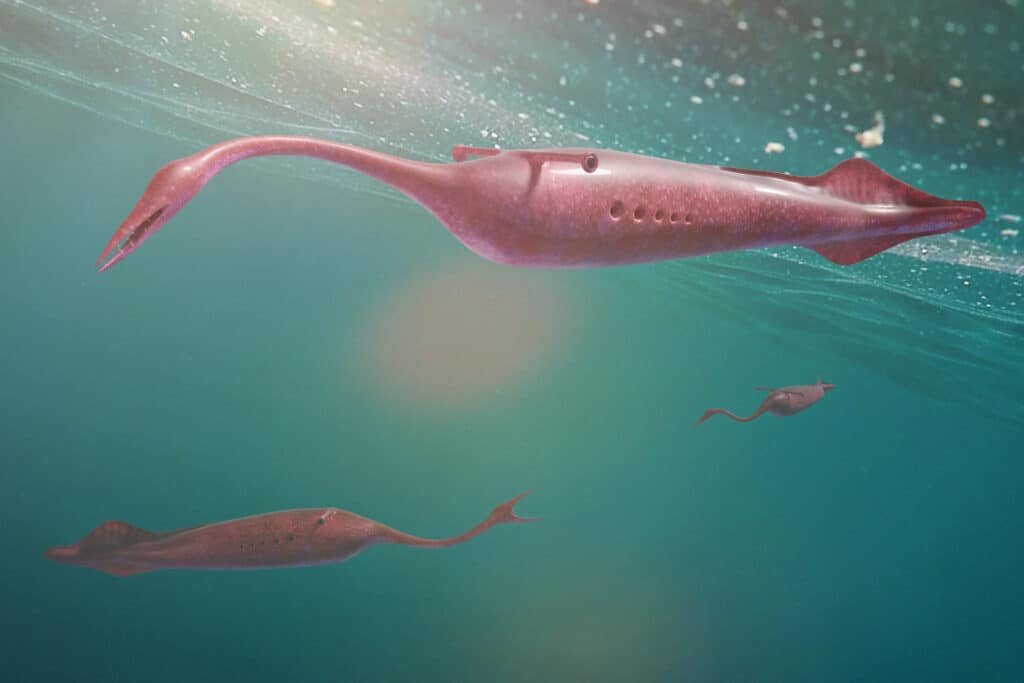
A graphic representation of a Tully Monster underwater.
©Dotted Yeti/Shutterstock.com
Tullimonstrum, also called the Tully Monster, is from the clade Bilateria. It possessed a soft body and lived in the shallow tropical waters of the Carboniferous. Tullimonstrum attained a maximum length of about 1.1 feet. It has an elongated body and a pair of vertical ventral fins at the tail end. In terms of its general appearance, this animal resembled a squid. However, it also had two eyes on stalks, as modern snails do.
In addition, it had a lengthy proboscis, which housed 16 sharp teeth (eight on each “jaw”). Scientists believed that the animal utilized this peculiar appendage to sift through the substrate in search of food, which might have included living and nonliving organisms.
Edestus
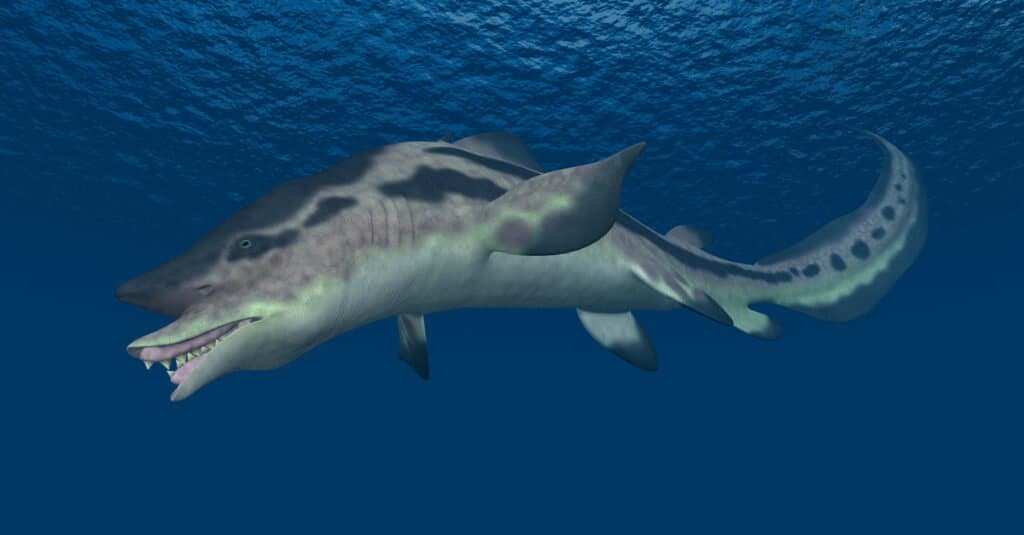
Speculation says the
Edestus heinrichireached a possible length of over 22 feet.
©Michael Rosskothen/Shutterstock.com
Edestus was a gigantic shark-like fish that lived during the Carboniferous. There are speculations that Edestus heinrichi, the largest species in this group, may have grown to a length of over 22 feet. Skull length estimates and fossilized tooth whorls provide the basis for this conclusion. Edestus was given the name “scissor tooth shark.” because both of its tooth whorls met in the middle of its mouth. Up to 12 serrated teeth sprouted in the back of each whorl and advanced forward out to the front.
Many scientists believed that Edestus utilized its bizarre jaws like scissors to sever the flesh of smaller fish and other soft-bodied organisms. Up to 13 different species of this cartilaginous fish have been found so far. It lived over a period of about six million years during the Late Carboniferous, about 313 to 307 million years ago.
Dendrerpeton
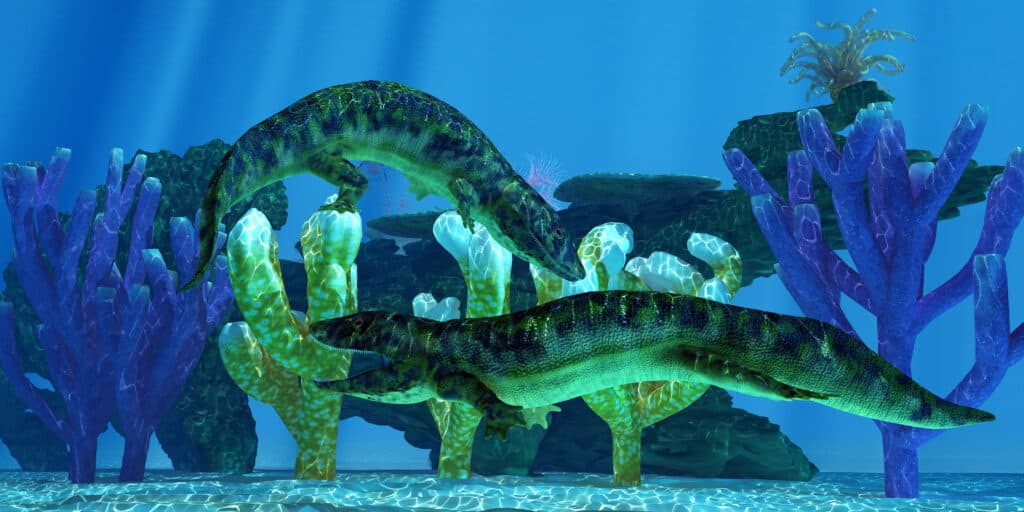
Having lived between 316 and 309 million years ago, Dendrerpeton is an extinct genus of
amphibians
.
©Catmando/Shutterstock.com
Dendrerpeton is an extinct genus of amphibians that lived between 316 and 309 million years ago. This animal represents one of the earliest examples of amphibians coming on land and one of the oldest Carboniferous Period animals. Although fossils of this amphibian have been mostly found in North America (Canada), there are a few specimens from the coal swamps of Ireland as well, indicating they might have lived in Europe too.
Unlike modern-day amphibians, Dendrerpeton was built like a modern-day lizard. It was an average of 1.1 feet long, but there are speculations that they probably grew to about 3.2 feet. Based on the dentition of this animal, scientists have proposed an insectivorous diet for it.
Iniopera

A 3D reconstruction of
Inioperafossil pieces.
© – License
Iniopera was a cartilaginous fish that lived in open seas of the Carboniferous. The odd-looking fish had a rounded tail fin to complement its massive, blunt skull and sharp teeth. It also had enormous pectoral fins that resembled wings. Iniopera lived during the later stages of the Carboniferous about 320 to 299 million years ago in an area now present-day North America.
Scientists think this fish swung its massive tail fin up and down to propel itself, similar to how a sea turtle swims. There’s a lot we still do not know about this animal. For instance, there are speculations that Iniopera could jump out of the water like modern dolphins to escape its aquatic enemies. Its huge pectoral fins would have helped it glide above the ocean’s surface, and its tail may have propelled it out of the sea.
Diplocaulus
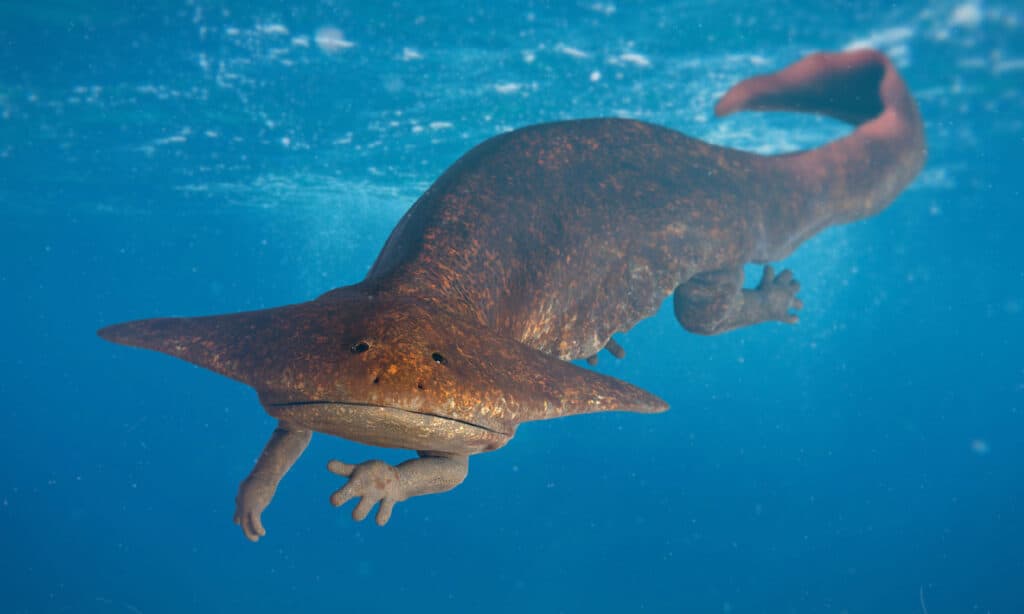
A boomerang-shaped skull is the defining feature of
Diplocaulus.
©iStock.com/dottedhippo
Diplocaulus lived in North America and Africa during the Late Carboniferous Period. An enormous boomerang-shaped skull is the Diplocaulus‘ defining feature. The unique shape of the skull is a result of elongated sideward-projecting horns on the amphibian’s head. Multiple theories have been put forward to explain the possible use of this peculiar head. The most prevalent theory is that this amphibian used its head to burrow into the soil.
Some have speculated that the enormous size of the Diplocaulus‘ head may have deterred predators from targeting it as prey since it would have been difficult for them to swallow. The two tabular horns may have also protected a set of external or internal gills.
Hibbertopterus
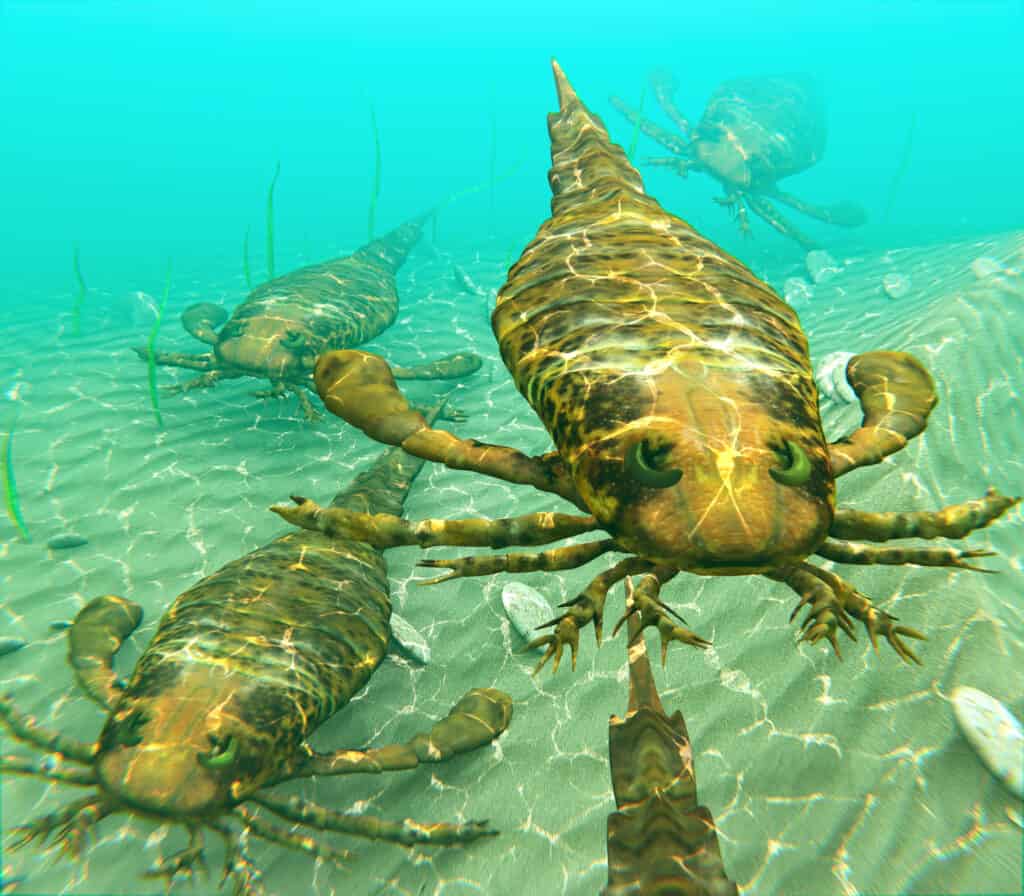
The euryptids were sea scorpions.
Hibbertopterusreached lengths of up to 6.6 feet.
©Aunt Spray/Shutterstock.com
The eurypterids, a group of aquatic arthropods, also known as sea scorpions, were relatively abundant during the Carboniferous Period. They appeared earlier during the Devonian but lived well into the Carboniferous Period. The enormous eurypterid, Hibbertopterus, lived in North America, Europe, and Africa, and it was one of the largest eurypterids ever found.
Hibbertopterus reached lengths of up to 6.6 feet and above 2.2 feet in width. It was slightly similar in appearance to modern horseshoe crabs. Likewise, it was possibly the heaviest sea scorpion due to its compact and broad body. Hibbertopetrus lived in swamps and river bottoms.
Honorable Mentions: More Carboniferous Period Animals
Below are a few more animals that lived during the Carboniferous Period that didn’t make our top 9, but are worthy of mention.
Dimetrodon

The Dimetrodon was a prehistoric reptile called a synapsid.
©Nobu Tamura / CC BY-SA 4.0 – License
The Dimetrodon (Dimetrodon grandis) was a prehistoric land-dwelling predator that lived from 295-272 million years ago. It was not a true dinosaur, rather, a type of reptile called a synapsid. It had a sail-like structure on its back featuring long neural spines. It likely went extinct due to habitat loss, climate change, and competition for prey.
Stethacanthus

Stethacanthus were a smaller shark species with unusual dorsal fins.
©Dmitry Bogdanov / CC BY-SA 3.0 – License
Roaming the deep during the Carboniferous Period, the Stethacanthus (Stethacanthus altonesis) was a shark species that owned a stand-out comb-like dorsal fin, possibly used as a weapon of defense. This fish was not very large–around 3 feet long–and it fed on other aquatic animals. It lived around 350 million years ago, with the cause for extinction being a bit unclear, though changes in its environment and competition could have been causes.
Summary of 9 Carboniferous Period Animals
| Species | Description | Time Lived | |
|---|---|---|---|
| 1 | Arthropleura | Large arthropods resembling giant centipedes | 345 to 290 Million Years Ago |
| 2 | Meganeura | Extinct, predatory flying insects similar to massive dragonflies | 300 Million Years Ago |
| 3 | Arthrolycosidae | Colossal, ancient arachnids that looked like modern spiders | 359-252 Million Years Ago |
| 4 | Tullimonstrum | Ancient, squid-like creatures also known as Tully’s Monster | 300 Million Years Ago |
| 5 | Edestus | An extinct type of shark that is known for their curved teeth | 313-307 Million Years Ago |
| 6 | Dendrerpeton | Carboniferous amphibians with prominent fossils found in Nova Scotia and Ireland | 309–316 Million Years Ago |
| 7 | Iniopera | Cartilaginous fish with wing-like pectoral fins | 320 to 299 Million Years Ago |
| 8 | Diplocaulus | Large, swamp-dwelling amphibians with triangular heads | 270 Million Years Ago |
| 9 | Hibbertopterus | Carboniferous arthropods also known as sea scorpions | 307-303 Million Years Ago |
Conclusion
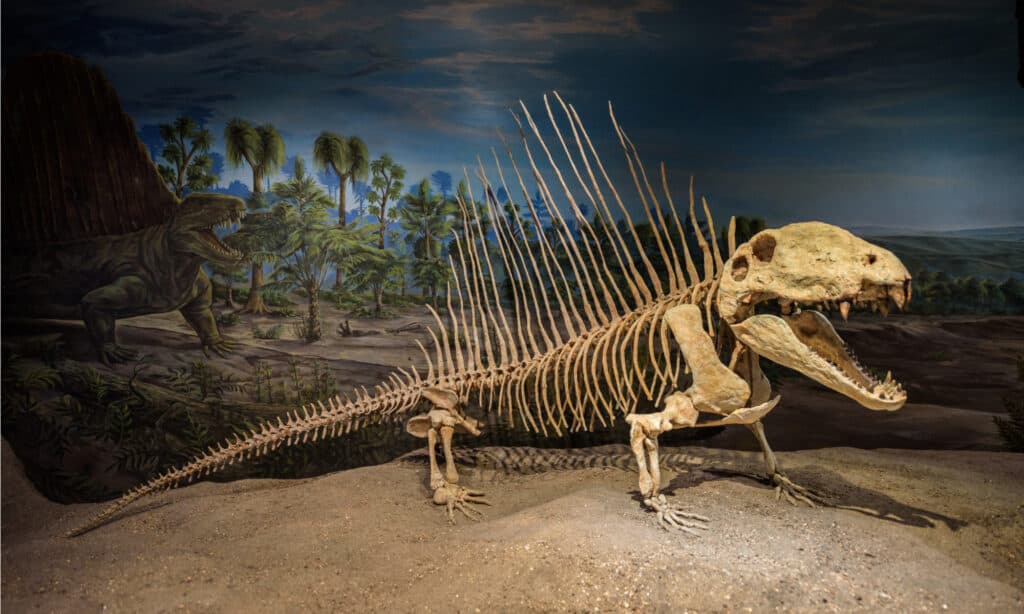
Dimetrodon lived during the Permian Period.
©Nick Fox/Shutterstock.com
The Carboniferous played a significant role in the planet’s evolution, especially in terms of terrestrial plant life and other life forms. The Carboniferous Period eventually ended with the formation of the supercontinent Pangaea, which set the basis for new species of plants and animals.
What Came After the Carboniferous Period?
The Permian Period, the last period of the Paleozoic Era, began 298.9 million years ago and ended 252.2 million years ago with a mass extinction caused by global warming. Pangea, the supercontinent, and the Panthalassic Ocean still existed. The large land mass led to dry to arid climates and lower sea levels that deflected warmer waters and currents to higher latitudes. Mountain ranges were built as landmasses collided and deserts became widespread. Numerous volcanoes erupted causing ash to fill the sky and contributing to extinction. Marine life had been very diverse during this period and plant life had evolved and thrived. Fossil records show early ancestors of dinosaurs lived during this tumultuous time.
The photo featured at the top of this post is © FABRIZIO CONTE/Shutterstock.com
Sources
- Owlcation, Available here: https://owlcation.com/stem/10-Bizarre-Beasts-that-Roamed-the-Carboniferous-Seas
- Berkeley University of California, Available here: https://ucmp.berkeley.edu/carboniferous/carboniferous.php
- Wikipedia, Available here: https://en.wikipedia.org/wiki/Dendrerpeton
- Wikipedia, Available here: https://en.wikipedia.org/wiki/Tuditanus
- National Geographic, Available here: https://www.nationalgeographic.com/science/article/carboniferous
Thank you for reading! Have some feedback for us? Contact the AZ Animals editorial team.






